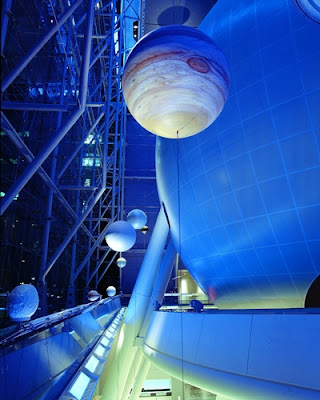American Museum of Natural History Address
Located across the street from Central Park, the American Museum of Natural History has 25 interconnected buildings with 46 permanent exhibition halls, research laboratories and library.
The Butterfly Conservatory - where hundreds of butterflies fly around you as you walk through it - is one of the most popular exhibits.
American Museum of Natural History Address: *
American Museum of Natural History
Central Park West & West 77th Street
New York, NY 10024
* Intersection of two streets next to museum.
The mailing address for the American Museum of Natural History is:
Central Park West at 79th Street, New York, NY 10024
Finding the American Museum of Natural History on Map Web Sites:
Google Map - Map already has street address.
Mapquest - Copy street address into search box.
Yahoo Maps - Copy street address into search box.
Via - Visiting dc
American Museum of Natural History Images Form Google
American Museum of Natural History -11
American Museum of Natural History -12
American Museum of Natural History -13
American Museum of Natural History -14
American Museum of Natural History -15
American Museum of Natural History -16
American Museum of Natural History -17
American Museum of Natural History -18
American Museum of Natural History -19
American Museum of Natural History -20
American Museum of Natural History -21
American Museum of Natural History -22
American Museum of Natural History -23
American Museum of Natural History -24
American Museum of Natural History -25
Located across the street from Central Park, the American Museum of Natural History has 25 interconnected buildings with 46 permanent exhibition halls, research laboratories and library.
The Butterfly Conservatory - where hundreds of butterflies fly around you as you walk through it - is one of the most popular exhibits.
American Museum of Natural History Address: *
American Museum of Natural History
Central Park West & West 77th Street
New York, NY 10024
American Museum of Natural History
Central Park West & West 77th Street
New York, NY 10024
* Intersection of two streets next to museum.
The mailing address for the American Museum of Natural History is:
Central Park West at 79th Street, New York, NY 10024
The mailing address for the American Museum of Natural History is:
Central Park West at 79th Street, New York, NY 10024
Finding the American Museum of Natural History on Map Web Sites:
Google Map - Map already has street address.
Mapquest - Copy street address into search box.
Yahoo Maps - Copy street address into search box.
Via - Visiting dc
American Museum of Natural History Images Form Google
American Museum of Natural History -12
American Museum of Natural History -13
American Museum of Natural History -14
American Museum of Natural History -15
American Museum of Natural History -16
American Museum of Natural History -17
American Museum of Natural History -18
American Museum of Natural History -19
American Museum of Natural History -20
American Museum of Natural History -21
American Museum of Natural History -22
American Museum of Natural History -23
American Museum of Natural History -24
American Museum of Natural History -25



















.jpg)





























